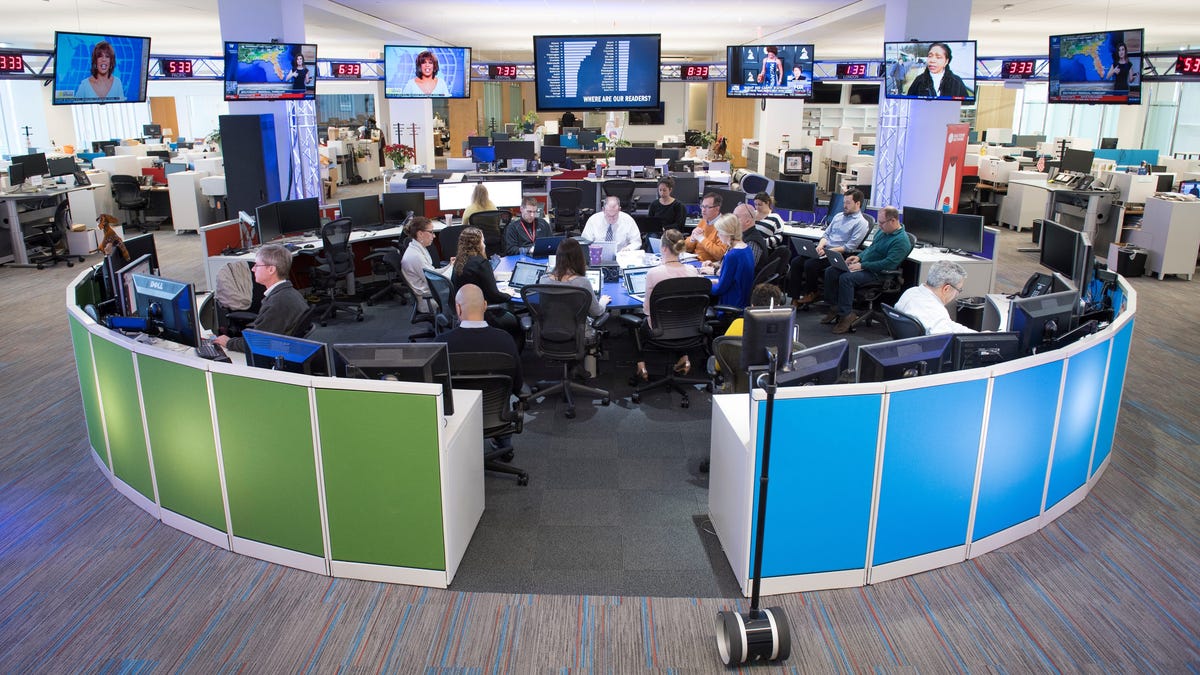
Bolster these work skills amid the AI boom
With new college graduates entering the workforce, these are key skills employers will look for amid the AI boom.
Nowadays, when Americans switch jobs, they’re not just making changes around the edges.
Sixty-four percent of workers who switched jobs from 2022 to 2024 also changed careers, according to an Indeed study of 35 million profiles on the leading job site.
Among the fields workers left at the highest rates: hospitality, and arts and entertainment.
Those fostering the most loyalty: nursing and software development,
Experts largely attribute the trend to shifts that took root during the COVID-19 pandemic, which triggered 22 million layoffs as well as new perspectives about work.
On a practical level, the health crisis spawned unprecedented labor shortages that allowed workers to hop among jobs for better pay, benefits and less tangible rewards.
“People could really change jobs if they wanted to,” said Allison Shrivastava, an economist with the Indeed Hiring Lab, the job site’s research arm. As a result, she said, “There was a lot more opportunity for people to change careers.”
How did COVID-19 affect the workforce?
COVID-19 also sparked deeper transformations. During the crisis, many workers burned out as they toiled long hours to fill in for idled colleagues or grew more aware of life’s fragility. That spurred a desire among many Americans for better work-life balance, remote or hybrid work set-ups and greater job fulfilment.
“People really started wanting to align their careers with their personal visions and values,” said Toni Frana, a career expert with FlexJobs, a job search site specializing in remote and hybrid jobs and roles with flexible hours.
While the job-hopping frenzy known as the Great Resignation has faded along with the pandemic, the fresh attitudes about career fulfilment and work-life balance seem to have endured.
According to a FlexJobs survey for USA TODAY in February, 24% of Americans said they tried to change occupations the previous year, 6% did so and another 39% said they’re looking to make a switch this year. That’s nearly 70% of workers changing careers, according to the online survey of 2,293 respondents, conducted by SurveyMonkey.
What are the reasons for career change?
The top reason: to work remotely, cited by 67% of respondents, followed by better work-life balance (52%), more meaningful or fulfilling career (48%) and higher pay (48%), the FlexJobs poll revealed.
Neither Indeed nor FlexJobs has previous data on the share of career switchers years ago. But Labor Department figures suggest the practice was less common. In January 2024, workers had been with their current employer a median of 3.9 years, down from 4.1 years in January 2022 and the shortest median tenure since January 2002.
Generally, the fewest workers switch from and to occupations that require formal credentials, licenses, training and specialized skills, according to Indeed. And there’s more turnover in fields with lower entry barriers and, typically, lower salaries.
Here are the top five occupations Americans left from 2022 to 2024, according to the Indeed survey:
Hospitality and tourism
Share of workers leaving in the two-year period: 91%.
Key reason: There’s not much upward mobility in the field, Indeed’s Shrivastava said.
Do you work for a great organization? Nominate it as one of America’s Top Workplaces.
And many workers are in lower-wage positions that have long hours and unpredictable schedules, according to Payactiv, a financial services company.
Arts and Entertainment
Share of workers leaving in the two-year period: 86%
Key reason: Jobs such as actors and authors are appealing but the chances of success are low.
“A lot of people may try their hand at it” but then leave for more stable occupations, Shrivastava said.
Child care
Share of workers leaving in the two-year period: 86%
Key reason: The field can be rewarding. But, “It’s a lot of work for not a lot of pay,” Shrivastava said.
During the pandemic, the sector laid off or furloughed 373,000 employees, or 36% of its workforce.
Logistics support
Share of workers leaving in the two-year period: 86%
Key reason: Supply chain troubles during the pandemic led many logistics workers to quit for better pay and less stress, according to Intelligent Audit, a logistics company.
Personal care and home health
Share of workers leaving in the two-year period: 86%
Key reason: While the job can be rewarding, many people leave because of low pay, long hours and inconsistent schedules, according to CareVoyant, which makes software for the industry.
Here are the bottom five fields workers left from 2022 to 2024:
Nursing
Share of workers leaving in the two-year period: 28%
Key reason: There’s lots of demand for nurses, wages have risen and few nurses leave once they’ve invested the time and money to earn nursing degrees, Shrivastava said.
Software development
Share of workers leaving in the two-year period: 37%
Key reason: Software developers have relatively high salaries and job satisfaction levels, Shrivastava said. It’s also a low-stress job with good work-life balance, according to U.S. News rankings.
Dental
Share of workers leaving in the two-year period: 38%
Key reason: The pay is good, the investment in schooling is significant and skills aren’t transferable to other occupations, Shrivastava said.
Therapy
Share of workers leaving in the two-year period: 51%
Key reason: Occupational therapists and speech pathologists earn a comfortable living and have high job satisfaction levels, Shrivastava said.
Accounting
Share of workers leaving in the two-year period: 52%
Key reason: Accountants have specialized skills, stable work environments and good work-life balance, Shrivastava said.








